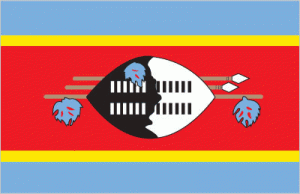Swaziland


Continent- Africa
Region – Southern Africa
Size – 17,364 km2
Geography – Landlocked, consists of mountains, savannas, rain forest and several rivers
Language-Swazi, English
Religion- 83% Christianity, 15% follows traditional religions, 1% Islam , 0.5% Baha’i Faith, 0.2% Hinduism
Monetary Unit- South African rand and Swazi lilangeni (SZL)
Natural Resources- Coal, clay, hydropower, asbestos, cassiterite, forests, quarry, stone, small gold and diamond deposits and talc
Agriculture- Sugar, maize, citrus fruit and other crops
Industry- Coal, wood pulp, soft drink concentrates, sugar, apparel and textiles
Neighboring Countries – Mozambique, South Africa
Population – 1,119,000 (2015 estimate)
Population Growth Rate- 1.5%
Average Life Expectancy – 48.85 years
Capital City – Lobamba (royal / legislative), Mbabane (administrative)
Highest Mountain – Emlembe
Yearly Rainfall – 140 cm in high veld, 85 cm in middle veld, 60 cm in the low veld
Plant Life – More than 3500 indigenous species of plants including aloes, orchids and begonias
Animal Life- Rhinos, giraffes, elephants, lions, leopard, cats, jackal, hyena, mongoose, hippopotamus, buffalo, zebra, antelope, monkeys , baboons, crocodiles
Bird Life – Cape Teal, Red-billed Duck, African Black Duck, Southern Pochard, European stork, sacred ibis, gray heron
Aquatic Life- 58 freshwater fish species
Facts and Figures Pages
